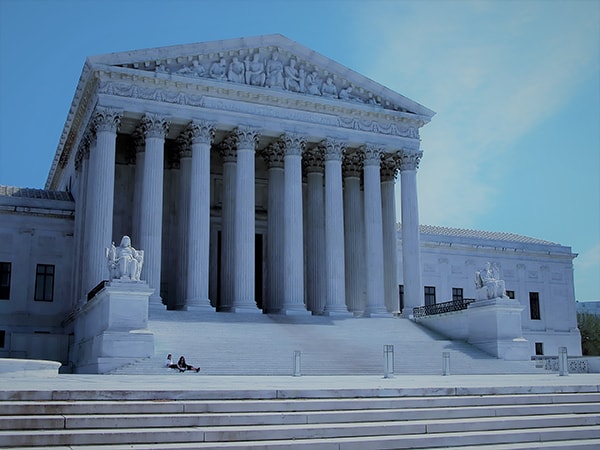Leading Federal Appeal Attorneys: Your Companions in Navigating the Appeals Process
Leading Federal Appeal Attorneys: Your Companions in Navigating the Appeals Process
Blog Article
Debunking the Refine of Federal Appeals: What You Need to Know
Browsing the detailed realm of government allures can usually appear like traversing uncharted waters for those strange with the procedure. Recognizing the nuances of appellate court jurisdiction, the details of filing a notice of appeal, offering an engaging brief, and making an influential dental disagreement are crucial components that can significantly affect the end result of an instance. By unwinding the layers of complexity bordering government charms, people can get a more clear understanding right into the devices that regulate this critical point of the lawful system.
Understanding Federal Appeals Refine
Digging right into the complex world of the federal appeals process introduces a methodical and organized trip with the judicial system. Federal appeals serve as an essential mechanism for reviewing choices made by lower courts. Understanding this procedure is important for anybody involved in lawful procedures at the federal degree.
The process generally begins with an event dissatisfied with a reduced court's judgment filing a notification of allure. This activates an evaluation by a greater court, where a panel of courts assesses the lawful disagreements presented by both events. Briefs describing the lawful reasoning behind each party's setting are submitted, and oral debates may be heard to clear up complicated issues.
The appellate court's decision is based on a thorough examination of the lower court's procedures and the disagreements offered. The judges do not focus however reconsider truths on whether legal errors happened that impacted the lower court's decision. As soon as the appellate court gets to a choice, it can attest, turn around, remand, or change the reduced court's ruling, supplying clearness and finality to the legal dispute. Understanding this process is vital for browsing the complexities of federal appeals effectively.
Appellate Court Territory Discussed
Appellate court territory refers to the scope of instances that a specific appellate court has the power to choose and assess upon. Unlike trial courts that listen to cases for the very first time, appellate courts are limited to examining choices made by lower courts.
Appellate courts have territory over specific sorts of instances, usually those entailing legal mistakes, procedural problems, or inquiries of law rather than valid disputes. The territory of appellate courts is usually described in laws and regulations that govern the court system. Comprehending appellate court territory is essential for events included in the charms procedure as it determines whether a situation is qualified for testimonial and the extent to which the appellate court can intervene in the lower court's choice.
Declaring a Notification of Appeal
The preliminary action in starting the federal charms procedure includes submitting a Notification of Allure with the appropriate appellate court. This essential paper officially alerts the court and the various other events associated with the instance that the appealing event plans to look for a review of the reduced court's choice. Filing a Notification of Appeal is a strict procedural requirement that sets the appellate procedure moving.
When preparing the Notice of Allure, it is vital to guarantee compliance with the particular guidelines and guidelines of the relevant appellate court. federal crime lawyer. The paper more should usually include information such as the case name, the lower court's name, the day of the judgment being appealed, and a succinct statement indicating the premises for the appeal

Instruction and Oral Disagreement
In the appellate procedure, offering created briefs and participating in dental arguments play essential duties in promoting for the appealing event's position before the appellate court. Briefs are thorough legal papers that lay out the parties' debates, lawful authorities, and analysis supporting their placements. These written entries provide the court with an in-depth understanding of the realities of the case, the appropriate legislation, and why the appealing event believes the lower court's decision must be rescinded.
Following the submission and evaluation of the briefs, dental debates offer the parties a chance to additional clarify their placements, resolve any questions the appellate judges may have, and highlight bottom lines from their created briefs. Dental debates are a chance for the attorneys to convince the judges with verbal advocacy and actions to queries from the bench.
Both the composed briefs and dental debates are critical parts of the appellate procedure, permitting events to offer their instance extensively and compellingly prior to the appellate court. - federal crime attorney
Receiving the Appellate Court Decision
Upon completion of dental debates and entry of composed briefs, the following critical phase in the appellate process involves waiting for the crucial judgment from the appellate court. This period of anticipation can be loaded with a mix of anxiousness and wish for parties associated with the allure. The appellate court's choice is normally provided in a written format and lays out the court's verdicts on the legal issues offered, the thinking behind their decision, and the judgment rendered. The moment framework for receiving the appellate court's choice can differ, but courts strive to give timely resolutions. Once the choice is provided, parties have to very carefully evaluate the court's judgment to comprehend the outcome and establish any type of further actions that may be essential. Whether the appellate court verifies, reverses, or remands the reduced court's decision, recognizing the implications of the judgment is important for all parties associated with the appellate process. Consequently, immediately reviewing and understanding the appellate court's decision is necessary in navigating the next action in the legal process.
Final Thought
Understanding the appellate court jurisdiction, filing a notice of appeal, preparing briefs, and presenting dental debates are all essential parts of this procedure. Inevitably, obtaining the appellate court choice can supply clearness and resolution to legal conflicts.
As we advance from comprehending the federal appeals procedure to studying the ins and outs of appellate court jurisdiction, a fundamental aspect comes to light regarding the authority and restrictions of these greater courts in the lawful landscape. Appellate court jurisdiction refers to the scope of instances that a specific appellate court has the power to decide and examine upon. Unlike test courts that hear instances for the initial time, appellate courts are limited to assessing choices made by lower courts. Comprehending appellate court territory is crucial for events included in the charms procedure as it identifies whether a case is qualified for evaluation and the extent to which the appellate court can interfere in the lower court's choice.

Report this page